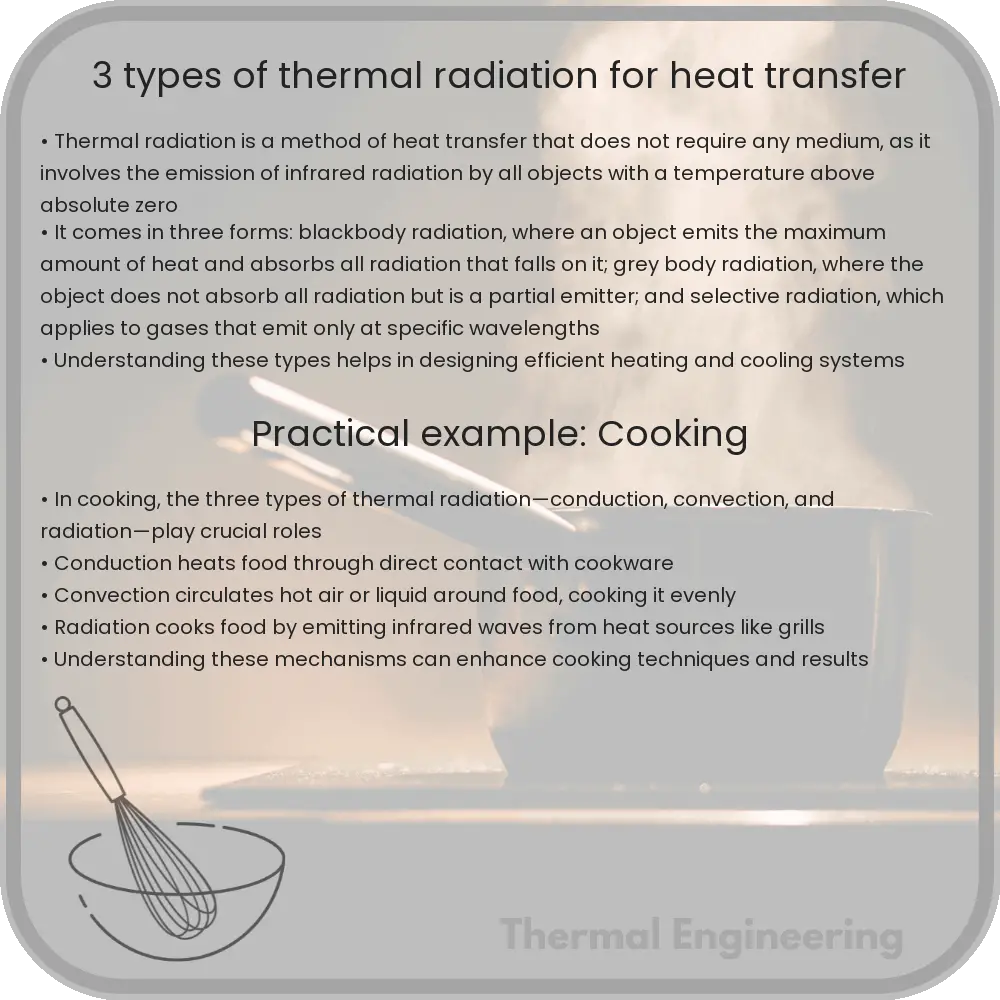Learn about thermal radiation and its role in heat transfer, including blackbody radiation, selective radiation, and environmental radiation.

Understanding Thermal Radiation for Heat Transfer
Thermal radiation is one of the principal mechanisms of heat transfer, involving the emission of electromagnetic waves by all bodies possessing a temperature greater than absolute zero. Unlike conduction and convection, radiation does not require any medium for heat transfer. This phenomenon can be observed in everyday life, such as the warmth felt from the sun or a fire. Thermal radiation is crucial in many engineering applications including, heating, cooling, and energy systems. Here, we explore three important types of thermal radiation relevant to engineering applications: blackbody radiation, selective radiation, and environmental radiation.
1. Blackbody Radiation
Blackbody radiation represents the idealized form of thermal emission. A black body is an idealized physical body that absorbs all incident electromagnetic radiation, regardless of frequency or angle of incidence. The amount and wavelength of the radiated energy from a black body are functions of only the body’s temperature, described by Planck’s law.
Mathematically, the power emitted per unit area of a black body (emissive power, Eb) at a given temperature T is given by the Stefan-Boltzmann Law:
Eb = σT4
where σ (sigma) is the Stefan-Boltzmann constant (approximately 5.67 × 10-8 W/m2K4). This relationship underscores how emissive power increases with the fourth power of the absolute temperature, indicating that hotter objects emit more radiation energy at a much faster rate than cooler ones.
2. Selective Radiation
Unlike a black body, real materials do not absorb and emit radiation uniformly at all wavelengths. These objects are known as selective radiators. Selective radiators can emit and absorb energy more efficiently at some wavelengths than at others. The efficiency is defined by an object’s emissivity (ε), which is the ratio of the energy emitted by the object to the energy emitted by a black body at the same temperature.
Selective radiators are particularly important in engineering applications involving thermal insulation and solar heat absorption. For example, materials with high emissivity close to 1, like black paint, are used for solar heating applications because they absorb most of the incident solar radiation, converting it to heat.
3. Environmental Radiation
Environmental radiation refers to the thermal radiation exchange between objects and their surroundings. Unlike isolated blackbody or selective radiation, environmental radiation involves complex interactions between multiple bodies at different temperatures. The net radiation heat transfer between two objects can be calculated considering their individual emissivities, temperatures, and the absorptivity of their surroundings.
The net radiative heat transfer Q between two bodies can be described by the following equation:
Q = ε12σA(T14 – T24)
where ε12 is the effective emissivity between the two bodies, A is the area through which radiation is exchanged, T1 and T2 are the absolute temperatures of the bodies. This equation highlights the impact of environmental conditions and the nature of surface interactions on the radiative heat transfer process.
In conclusion, understanding the different types of thermal radiation is essential for optimizing heat transfer in various engineering systems. By manipulating parameters such as emissivity and understanding the nature of environmental radiation, engineers can design more efficient heating, cooling, and insulation systems tailored to specific environmental conditions and operational needs.